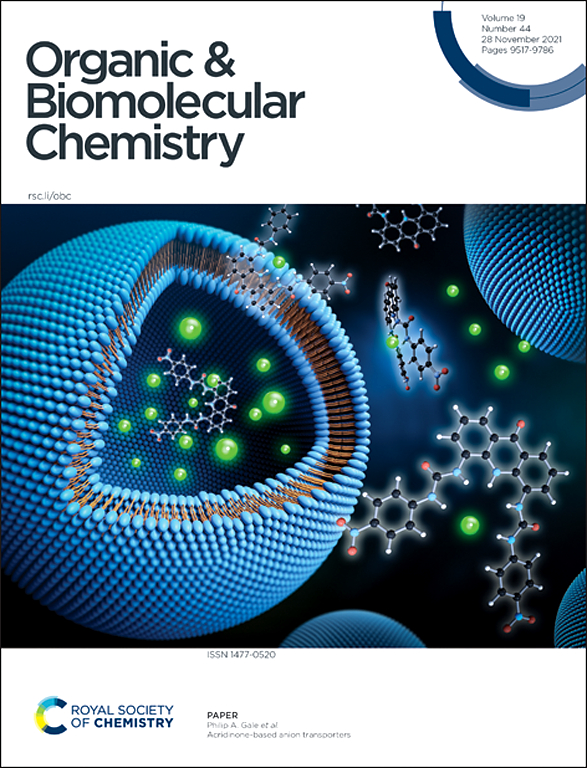摘要
本研究探讨了缓冲液类型、pH 值和温度对应变促进的炔吖啶环加成反应(SPAAC)动力学的影响。我们以 3-叠氮-L-丙氨酸和 1-叠氮-1-脱氧-β-D-吡喃葡萄糖苷为模型叠氮化物,以磺基 DBCO-胺为炔烃,考察了在一系列缓冲液(包括 PBS、HEPES、MES、硼酸盐缓冲液和细胞培养基(DMEM 和 RPMI))中的反应速率,缓冲液的 pH 值为 5 至 10,温度为 25 和 37 °C。吸收分光光度数据显示,PBS(pH 值为 7)的速率常数最低(0.32-0.85 M-1 s-1),而 HEPES(pH 值为 7)的速率常数最高(0.55-1.22 M-1 s-1)。此外,在 DMEM 中的反应比在 RPMI 中快(0.59-0.97 对 0.27-0.77 M-1 s-1)。我们观察到,除了在 HEPES 缓冲液中,pH 值越高反应速率越快。值得注意的是,1-叠氮-1-脱氧-β-D-吡喃葡萄糖苷的反应速度快于 3-叠氮-L-丙氨酸,这凸显了在优化 SPAAC 反应时考虑叠氮化物电子负载能力的重要性。用 DBCO 修饰的抗体(DBCO-曲妥珠单抗和 DBCO-PEG5-曲妥珠单抗)进行的其他实验证实了与缓冲液和叠氮化物选择有关的趋势。PEG 连接物的存在明显提高了反应速率(0.18-0.37 M-1 s-1),提高幅度为 31 ± 16%。这项研究为了解影响 SPAAC 动力学的因素提供了有益的启示,有助于开发优化的生物共轭策略。This study investigates the effects of buffer type, pH, and temperature on the kinetics of strain-promoted alkyne-azide cycloaddition (SPAAC) reactions. Using 3-azido-L-alanine and 1-azido-1-deoxy-β-D-glucopyranoside as model azides and sulfo DBCO-amine as the alkyne, we examined reaction rates in a series of buffers, including PBS, HEPES, MES, borate buffer, and cell culture media (DMEM and RPMI), with pH values ranging from 5 to 10 and temperatures of 25 and 37 °C. Absorbance spectrophotometric data revealed that PBS (pH 7) exhibited among the lowest rate constants (0.32-0.85 M-1 s-1), whereas HEPES (pH 7) had the highest (0.55-1.22 M-1 s-1). Additionally, reactions in DMEM were faster than in RPMI (0.59-0.97 vs. 0.27-0.77 M-1 s-1). We observed that higher pH values generally increased reaction rates, except in HEPES buffer. Notably, 1-azido-1-deoxy-β-D-glucopyranoside reacted faster than 3-azido-L-alanine, highlighting the importance of considering the electron-donating capacity of azides in the optimisation of SPAAC reactions. Additional experiments with DBCO-modified antibodies (DBCO-trastuzumab and DBCO-PEG5-trastuzumab) corroborated the trends related to buffer and azide selection. The presence of a PEG linker notably enhanced reaction rates (0.18-0.37 M-1 s-1) by 31 ± 16%. This study offers useful insights into the factors affecting SPAAC kinetics, facilitating the development of optimised bioconjugation strategies.

 求助内容:
求助内容: 应助结果提醒方式:
应助结果提醒方式:


